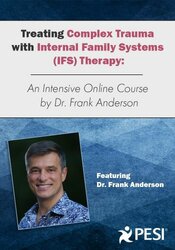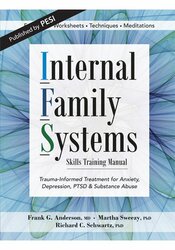6 Step IFS Therapy Process to Jumpstart Healing

In the treatment of trauma, IFS therapy is different from traditional phase-oriented treatments. Instead of starting with building resources in clients before processing traumatic memories, it welcomes extreme symptoms from the onset, learns about their positive protective intentions, and gets their permission to access the traumatic wounds.
But before we can begin the work of healing trauma with IFS therapy, we have to first begin by unblending our client’s various parts. We do this by walking our clients through the 6Fs: Find, Focus, Flesh it out, Feel, beFriend, and Fear.
The process is simple, and you can use the following steps as a guide to help you unblend parts with your clients...
The 6Fs: The Steps We Use to Help Protective Parts Differentiate from the Self
The first three steps (find, focus, flesh out) involve helping parts to unblend.
- FIND the part in, on, or around the body.
- Who needs your attention right now?
- Where do you notice it?
- FOCUS on it.
- Turn your attention inside.
- Turn your attention inside.
- FLESH it out.
- Can you see it? If so, how does it look?
- If not, how do you experience it? What is that like?
- How close are you to it?
- How do you FEEL toward the part?
- This question is our Geiger Counter for Self-energy. Any answer that is not in the ballpark of the 8 C’s (The qualities of Self-energy: Curiosity, calm, clarity, connectedness, confidence, courage, creativity, and compassion) means that a second part is influencing our thoughts. We ask this second part if it is willing to relax so we can talk to the target part. “If it is not willing to relax,” we ask it what it needs us to know. This process may lead us to a second (or third, fourth…) target part.
- Reactive parts often need to feel heard and validated. We stay with them until they are willing to let us get to know the target part.
- Once they agree, we ask the client, “How do you feel toward the (target) part now?”
- BeFRIEND the part by finding out more about it.
- The fifth step involves learning about the target part and developing a friendly relationship. This builds relationships internally (Self to part) and externally (part to therapist). “How did it get this job?” “How effective is the job?” “If it didn’t have to do this job, what would it rather do?” “How old is it?” “How old does it think you are?” “What else does it want you to know?”
- The fifth step involves learning about the target part and developing a friendly relationship. This builds relationships internally (Self to part) and externally (part to therapist). “How did it get this job?” “How effective is the job?” “If it didn’t have to do this job, what would it rather do?” “How old is it?” “How old does it think you are?” “What else does it want you to know?”
- What does this part FEAR?
- “What does it want for you?”
- “What would happen if it stopped doing this job?”
“If I stop feeling anxious, I’m afraid the suicidal part will take over.” Or it will reveal the exile it protects.
“If I stop feeling anxious, I’m afraid Jane will feel all alone and worthless.”
Use this simple exercise to help your clients understand and work with their internal parts to begin the deep healing process that trauma requires.

But there's an easy way to get therapy back on track...
Use this FREE Worksheet to help you identify the roots of your client's extreme response and determine what neuroscience-informed interventions are best for helping your clients get beyond their extreme trauma reactions — so you can help them find relief faster.

Join Dr. Frank Anderson, psychiatrist, author, and expert IFS therapist in this comprehensive online course where he will give you a step–by–step guide for applying IFS therapy into your clinical practice. Note: This product is not endorsed by, sponsored by, or affiliated with the IFS Institute and does not qualify for IFS Institute credits or certification.

Internal Family Systems Therapy (IFS) provides a revolutionary treatment plan for PTSD, anxiety, depression, substance abuse, eating disorders and more. This new manual offers straight-forward explanations and illustrates a wide variety of applications. Easy to read and highly practical. Note: This product is not affiliated with the IFS Institute and does not qualify toward IFS Institute credits or IFS Institute certification.
Want the 6-Step IFS Therapy Process to Jumpstart Healing Infographic?
Read the blog to download your FREE infographic to help your clients separate protective parts from the self. This free resource is an excellent starting point for adding IFS therapy to your practice.







